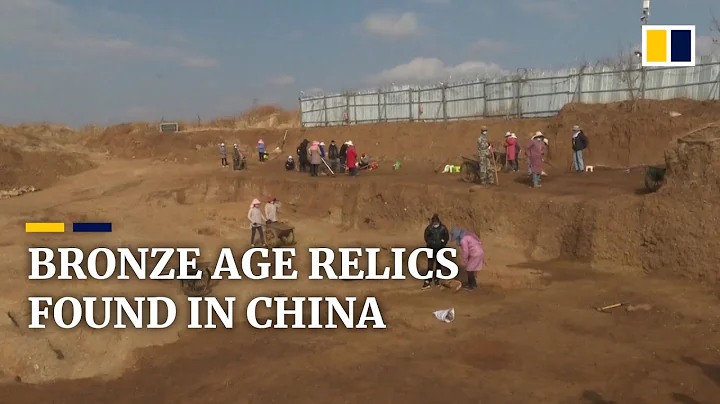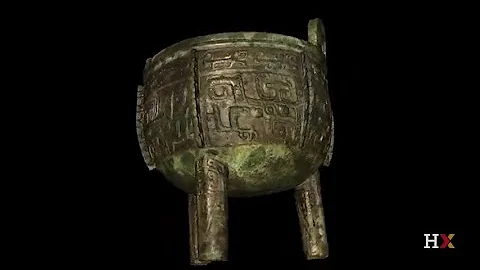Science and Technology Daily Reporter Qiao Di
The Simuwu Ding has long been considered the largest bronze artifact in China's Bronze Age, and has even been included in middle school history textbooks. But on October 10, to commemorate the 110th anniversary of the discovery of the oracle bone , a reporter from Science and Technology Daily learned from the Anyang Work Station of the Institute of Archeology of the Chinese Academy of Social Sciences that they had discovered three models that were larger than the existing Simuwu Ding. Researcher Tang Jigen, the former webmaster of this website and a famous archaeologist, asserted: "The Simuwu Ding is not the largest bronze in ancient China! " At most, it can be called "the largest and heaviest bronze in existence in the Chinese Bronze Age."

Simuwu Ding (or Houmuwu Ding)
Simuwu Ding is currently my country's leading cultural relic and is regarded as the treasure of the National Museum. This ritual vessel used by the royal family of the Shang Dynasty (about 16th century BC to 11th century BC) is 133 cm high, 110 cm long, 78 cm wide, and weighs 832 kg. The vessel is tall, thick, majestic, solemn in decoration and exquisite in craftsmanship. It was dug out of cultivated land in 1939 by villagers of Anyang Wuguan Village.
However, after more than 90 years of continuous excavation, especially in the past 20 years, archaeologists have made more and more discoveries that are overturning this historical conclusion. These are the first three models that have been discovered one after another.
In the copper casting workshop in the north of Yinxu nursery, a remnant of a tripod model that was used for casting was found. It was upside down in the ground when it was unearthed. Only half of the tripod mouth remained, but the length of the tripod mouth was complete. After calculation, the length of the mouth of the finished bronze tripod is 117 cm, and the width of the mouth is no less than 80 cm, which is 7 cm and 2 cm longer than the Simu Wu Ding respectively. This size is obviously slightly larger than the actual measured size of Simuwu Ding.

A mold core for casting a large round bronze ware unearthed from the Xiaomintun Copper Casting Workshop. Photo courtesy of the Anyang Archaeological Station of the Chinese Academy of Social Sciences
A round bronze casting was discovered in the Shang Dynasty Ventilation Casting Workshop of Xiaomintun near Yin Ruins. , made of selected clay, is probably the inner model of a bronze round tripod. Measurements show that its mouth is 158 centimeters in diameter. "This is the largest circular bronze with the largest diameter among the Shang Dynasty bronzes seen so far." He Yuling, deputy director of the Anyang Work Station, explained.
Also in the Xiaomintun copper casting workshop, archaeological experts also discovered a pottery mold used to cast bronze tripod feet. Its diameter is also larger than the diameter of the Simuwu tripod foot, and the diameter of its sole is about 16 centimeters.

The copper tripod foot mold unearthed from Xiaomintun Copper Casting Workshop. Photo courtesy of the Anyang Archaeological Station of the Chinese Academy of Social Sciences.
In addition, archaeologists also discovered 3 pieces of bronze in Tomb No. M1001, northwest of Yin Ruins, each with a height of 70 Centimeters or more, its shape is exquisite, far better than other bronze wares such as Simuwu Ding. These three pieces of bronze are just leftover items from M1001. From another aspect, it is proved that the large tomb of the royal mausoleum in the northwest of the Yin Ruins was probably buried with larger and better bronze vessels than the Simuwu Ding.
Tang Jigen said, "These unearthed models fully demonstrate that larger and heavier bronzes than the Simuwu Ding were cast during the Yin and Shang Dynasties. This was also the requirement of the ritual system at that time."
Experts said that the Simuwu Ding was The son of Shang King Wu Ding cast it in memory of his biological mother. The three-character inscription "Simuwu" on its abdomen is clear evidence. "Mother" refers to the mother, and "W" refers to the order of the mother's temple number. There are two interpretations of the word "SI". According to traditional saying, "Si" means "sacrifice", so "Si Mu Wu" can be interpreted as "sacrifice to Mother Wu". But strictly speaking, the correct interpretation of the word "SI" should be "hou". Therefore, "Si Mu Wu" should be "Step Mu Wu". Of course, "Si Mu Wu Ding" should also be called "Step Mu Wu Ding". However, due to common convention, the name "Si Mu Wu Ding" has been retained to this day. The original meaning of the ancient word "hou" is equivalent to today's "sublime" and "great". "Stepmother Wu" can be literally translated as "the great and noble mother Wu". Archaeologists infer that the Simuwu Ding (or Houmuwu Ding) was cast during the reign of Wu Ding, the 23rd king of the Shang Dynasty. Wu Ding was the leader of the ZTE in the late Shang Dynasty. According to Oracle records, Wu Ding had three "legal spouses", one of whom was "E".

Experts believe that during the Shang and Zhou dynasties, bronze ritual vessels were symbols of rank and status.According to the etiquette at that time, the king's tripod should be larger than the queen's tripod. However, the Yinxu royal tomb has been repeatedly robbed since the Western Zhou Dynasty. After King Wu of Zhou Dynasty destroyed the Shang Dynasty, he moved the nine tripods, which symbolized royal power, to Luoyang , now the royal tombs of the Yin Ruins are almost empty, so naturally there are no bronzes that symbolize the power and status of the Shang king and are larger than the Simuwu Ding.








![[Documentary] China's Bronze Age - Shang Dynasty (1760 - 1520 BC) 商朝 - DayDayNews](https://i.ytimg.com/vi/VRQKp_vjVSY/hqdefault.jpg?sqp=-oaymwEcCOADEI4CSFXyq4qpAw4IARUAAIhCGAFwAcABBg==&rs=AOn4CLD9SozNJp9j4tyu8n5YbxGlrNAzlg)












